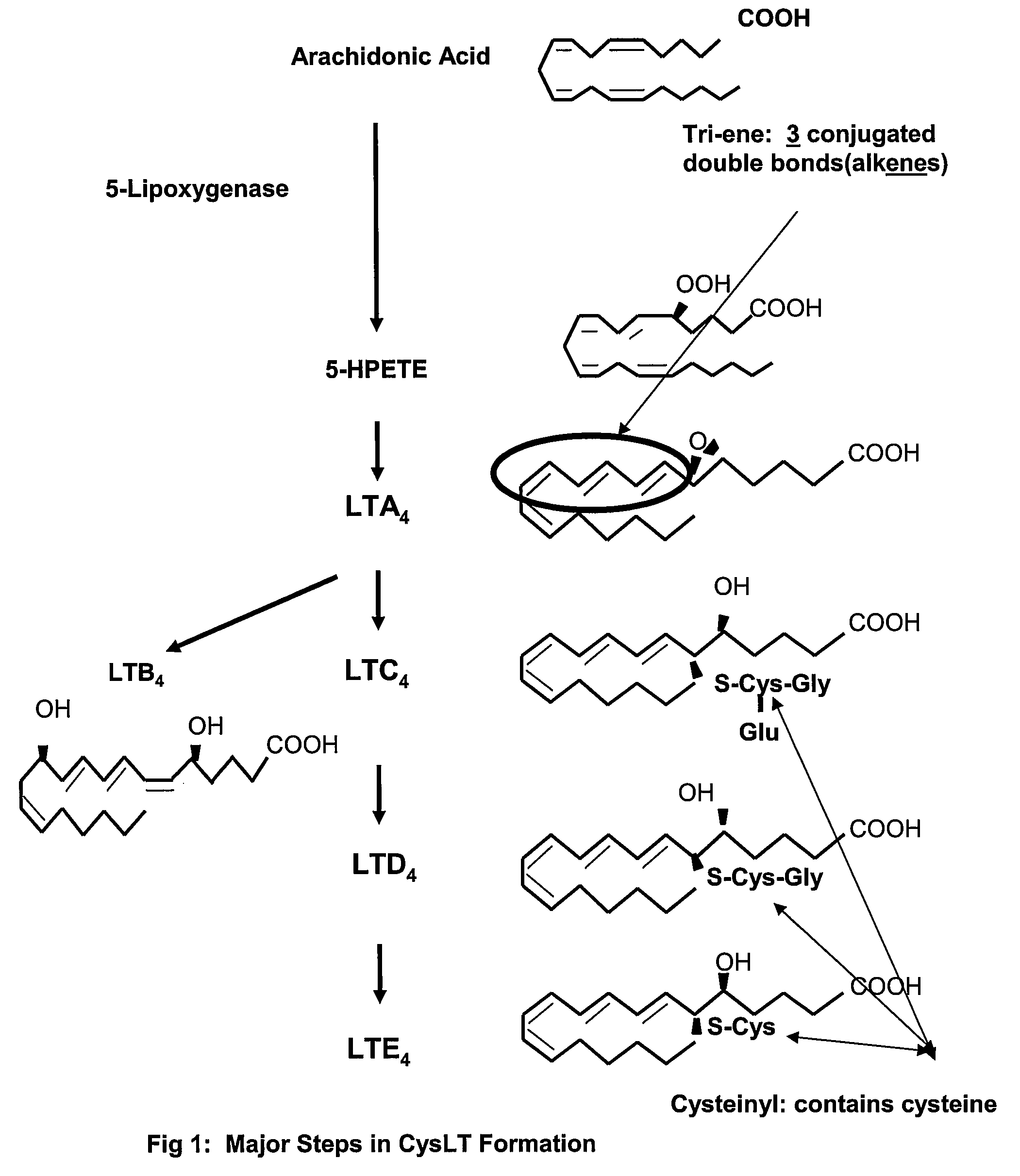Methods to determine susceptibility to treatment with leukotriene modifiers
a leukotriene modifier and susceptibility technology, applied in the field of methods to determine the susceptibility of a subject to treatment with leukotriene modifiers, can solve the problems of ineffectiveness of anti-leukotriene medications in some subjects and unclear in others, and achieve the effect of determining the susceptibility of a subj
- Summary
- Abstract
- Description
- Claims
- Application Information
AI Technical Summary
Benefits of technology
Problems solved by technology
Method used
Image
Examples
example 1
[0045]This example evaluates the differences in CysLT levels between individuals and asthma control. In the experiments described below, a randomized-placebo-controlled study showed that increased albuterol usage among school children is associated with changes in CysLT levels (as defined by urinary LTE4 excretion) and attenuated after randomization to treatment with montelukast.
[0046]Children received 22% more albuterol per IQR (interquartile range) increase in LTE4. Since the approximate mean albuterol use in these children was 2 puffs per day, on average, children received 13 extra puffs per month when LTE4 levels were high compared to when they were low. In the example below, the children were followed in a relatively well-controlled setting over consecutive days. As such, there was limited variability in LTE4 and albuterol usage. Assuming a linear relationship, this percent change relationship could be extrapolated to different settings in order to estimate, for example, the ma...
example 2
[0065]This example illustrates that less albuterol use is needed after montelukast treatment in subjects having high CysLT / eosinophilic airway inflammation ratio compared to subjects with lower ratios.
[0066]The efficacy of montelukast treatment on LTE4-related albuterol usage (i.e. increase in albuterol usage per IQR change in LTE4) was examined. Based on results from the previous analysis, the primary lag structure used in these models was a 3-day moving average, from Days 1 to 3, which was centered on the day with the largest observed effect (Day 2). Also analyzed was the 3-day moving average from Days 0 through 2. The moving average often reduces variability in estimates compared with considering individual days.
[0067]For the Day 1-3 moving average, albuterol usage increased 11.3% per IQR increase in LTE4 (p=0.04) during the baseline interval for the montelukast group (Table 4). During the treatment interval, this relationship was not apparent (−3.2%, p=0.44), and the relative ch...
PUM
| Property | Measurement | Unit |
|---|---|---|
| mass spectrometry | aaaaa | aaaaa |
| chemiluminescence analyzers | aaaaa | aaaaa |
| electrochemical monitors | aaaaa | aaaaa |
Abstract
Description
Claims
Application Information
 Login to View More
Login to View More - R&D
- Intellectual Property
- Life Sciences
- Materials
- Tech Scout
- Unparalleled Data Quality
- Higher Quality Content
- 60% Fewer Hallucinations
Browse by: Latest US Patents, China's latest patents, Technical Efficacy Thesaurus, Application Domain, Technology Topic, Popular Technical Reports.
© 2025 PatSnap. All rights reserved.Legal|Privacy policy|Modern Slavery Act Transparency Statement|Sitemap|About US| Contact US: help@patsnap.com


